One unnerving challenge for an architect is adding onto a revered master’s work. In 2014, architect Lederer Ragnarsdóttir Oei (LRO) won a competition to design an annex to a choir school abutting Gottfried Böhm’s Church of the Resurrection of Christ in Cologne, Germany, completed in 1970. Böhm, a cult figure who won the Pritzker Architecture Prize in 1986, is known for his poured-in-place concrete Brutalist buildings of sculptural virtuosity. Additionally daunting for LRO is that Böhm, who just turned 101, lives in this city, where his grandfather, father, wife, and three sons were and are architects. (Not a bad gene pool.)
LRO, based in Stuttgart, has won a reputation over the years for modern buildings that refer to the architectural vocabulary and materials of the region, as seen dramatically in the firm’s crafted, idiosyncratic sandstone Historical Museum in Frankfurt. “How do you react when designing an addition to a building by someone you hold in such high esteem?” asks Arno Lederer, principal of the 41-year-old practice. “The only way to succeed, or fail,” says Marc Oei, another principal, “is to follow one’s own personal notion of architecture.”
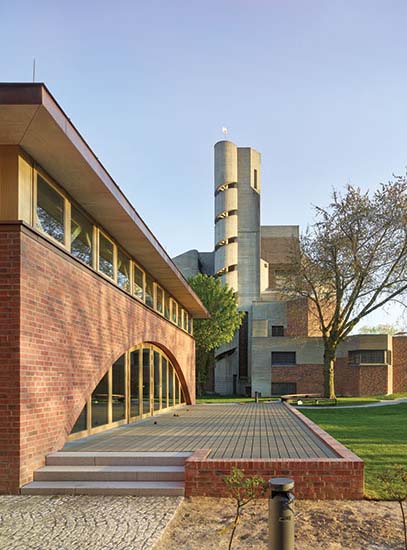
The volumes open onto a lawn to the west and link on the south to a church designed by Gottfried Böhm in 1970. Photo © Roland Halbe, click to enlarge.
In Cologne, the architects needed to provide rehearsal space and practice rooms for the choir school and other choir members, along with a dining hall/event area, and 10 affordable rental apartments. In creating this multi-use structure, the architects felt the new building should not imitate Böhm’s church, with its spiraling sculptural tower of concrete and variegated brick. Nor should it “contrast too much with it,” says Lederer. So the firm conceived an L-shaped structure that fills in the northeast corner of an eight-acre site, angled to face Böhm’s ensemble of craggy, rocklike forms to the south, to which it connects at one end. Around the complex are separate buildings for the primary grades of the Domsingschule (Cathedral Choir School) and the overall entity known as Kölner Dommusik (Cathedral Music) plus the secondary Liebfrauenschule (School of Our Lady), whose students also use the annex. (While the new building is called an “annex,” it is its own physical entity and only touches the Böhm church.)
To accommodate the program, LRO placed four rehearsal rooms, two voice-training rooms, and 30 practice rooms on the ground level and second floor of the four-story linear block, the longer arm of the L, edging the north side of the site. The shorter arm of the L runs south toward Böhm’s church and contains a single-story (but double-height) dining hall and event space that can seat 300 primary- and secondary-school students. On the south end of the dining hall, LRO created a two-story structure, for the caretaker office and practice rooms, that is attached to the Böhm church.
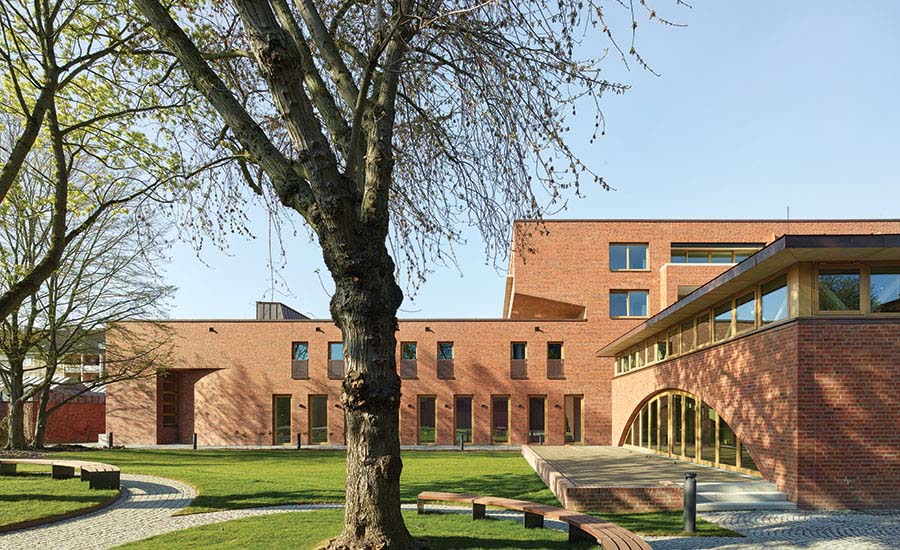
The rehearsal/practice rooms and the dining hall open onto the Sing Garden. Photo © Roland Halbe
In addition, the client, the Cologne archdiocese, wanted to offer 10 rental apartments for those seeking affordable housing in the city’s Lindenthal district, so one part of the long arm of the L has these units on the upper three floors. Both the long and short arms of the L embrace a lawn with curving paths, named the Sing Garden in homage to the choir students traversing it from the nearby Domsingschule to the annex and the church.
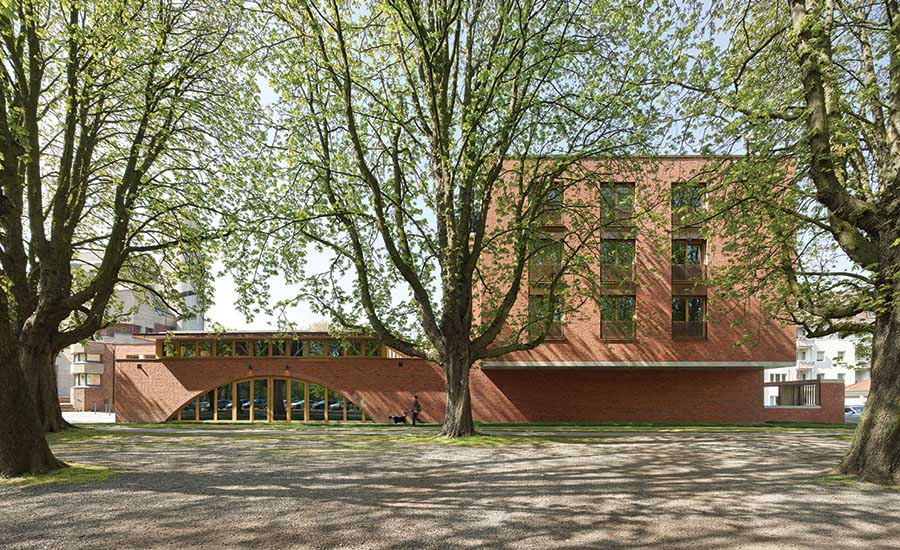
1
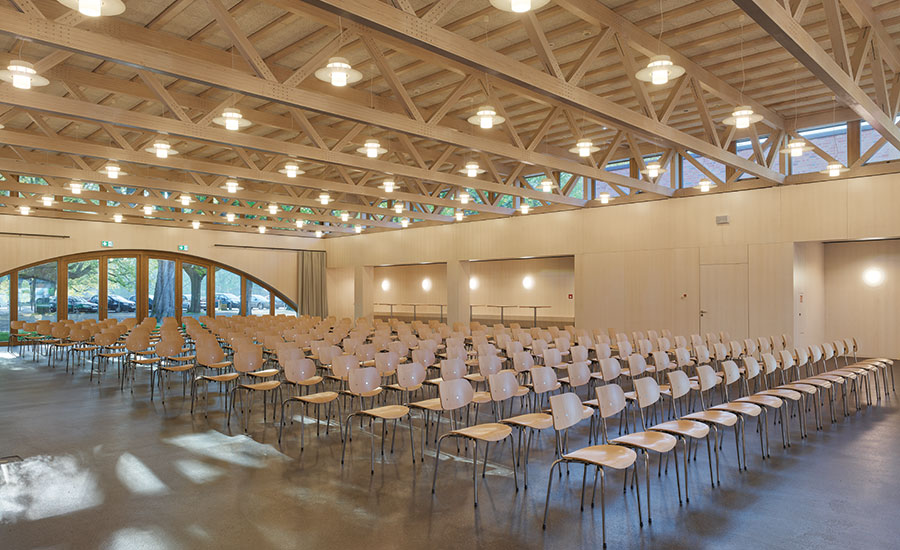
2
Facing the public park on the opposite side is another arched window (1). Wood girders and trusses (2) span the pavilion. Photos © Roland Halbe
A notable architectural feature in this 57,000-square-foot ensemble is the pair of arched, glazed expanses enclosing the dining/event space, one side facing west to the Sing Garden, the other east to a public park dotted with landmarked chestnut trees. Timber girders and trusses lift the flat wood-framed roof of this hall above clerestory windows, so that it becomes an airy, light-filled pavilion on the way to Böhm’s church. While the arcing windows seem unusual for a school, the curvilinear expanses act as a strong counterpoint to the linearity of the LRO scheme and the articulated spiral of the Böhm church. “We wanted the window to act as the public face of the annex,” says Oei.
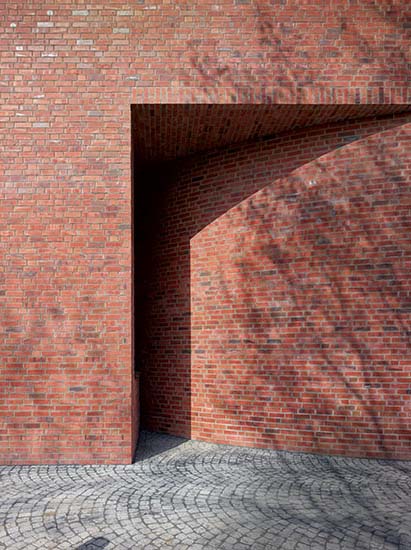
Detail, south façade. Photo © Roland Halbe
Just as important to the gestalt is the brick cladding, a material the architects have frequently used for its economical yet timeless quality, and its sense of the hand and human scale. Yet they know there is brick and there is brick. While Lederer says the team chose an evenly fired running bond brick for budgetary reasons, it is more “boring” than other, distinctive masonry bond patterns. “Yet this does not seem to be a drawback,” he says. “We wanted to respond with restraint to the lively masonry of the church.” Still, its homogeneity may be in the eye of the architect: the brick appears more mottled than many commonplace commercial examples.
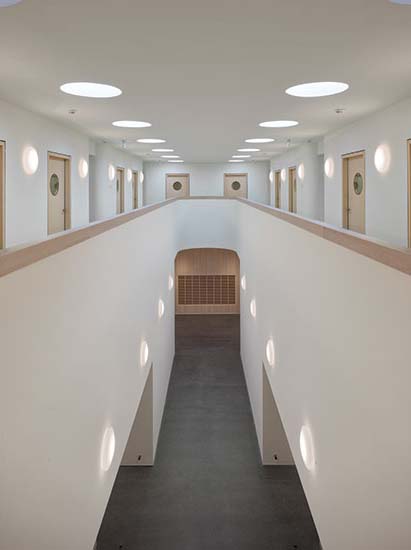
3

4
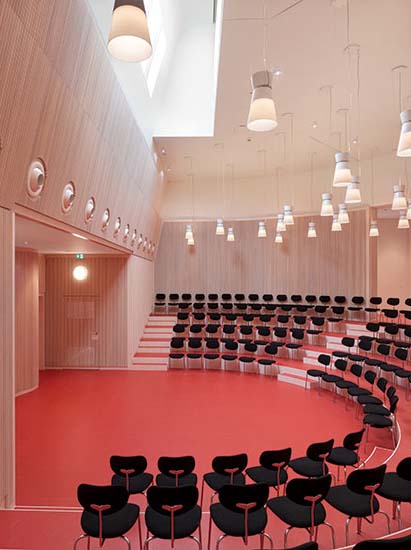
5
The practice rooms on the second level (3 & 4) loop around an ovoid opening. The ground floor’s largest rehearsal room (5) is enclosed by semicircular seating for 160 children. Photos © Roland Halbe
The interiors of the annex’s concrete-frame structure have a warm yet spartan Aalto-esque feeling. The large curvilinear seating of the 160-seat rehearsal room (whose shape in plan nicely recalls the elevations of the dining room’s window walls) receives natural illumination through deep skylights and curved slots in the brick walls. The wood paneling and millwork in the rehearsal rooms continues to a degree in the white-painted corridors, dramatized by a curved balustrade looping around an ovoid opening on the second floor. The apartments are simple, varying in size from 860 to 1,500 square feet. Yet they all have balconies overlooking the church that, along with windows on the other side, provide cross ventilation.
LRO was able to combine the three separate programmatic elements in the L-shaped block yet distinguish the different uses through volumetric massing. In so doing, they kept the height of the new structure low enough so that the Böhm church would still dominate the ensemble. Although German schools have been closed and church use restricted because of the coronavirus lockdown, the complex, just completed last March, awaits the day when all can again experience this unique coming together of architecture, music, and people.
Click plans to enlarge
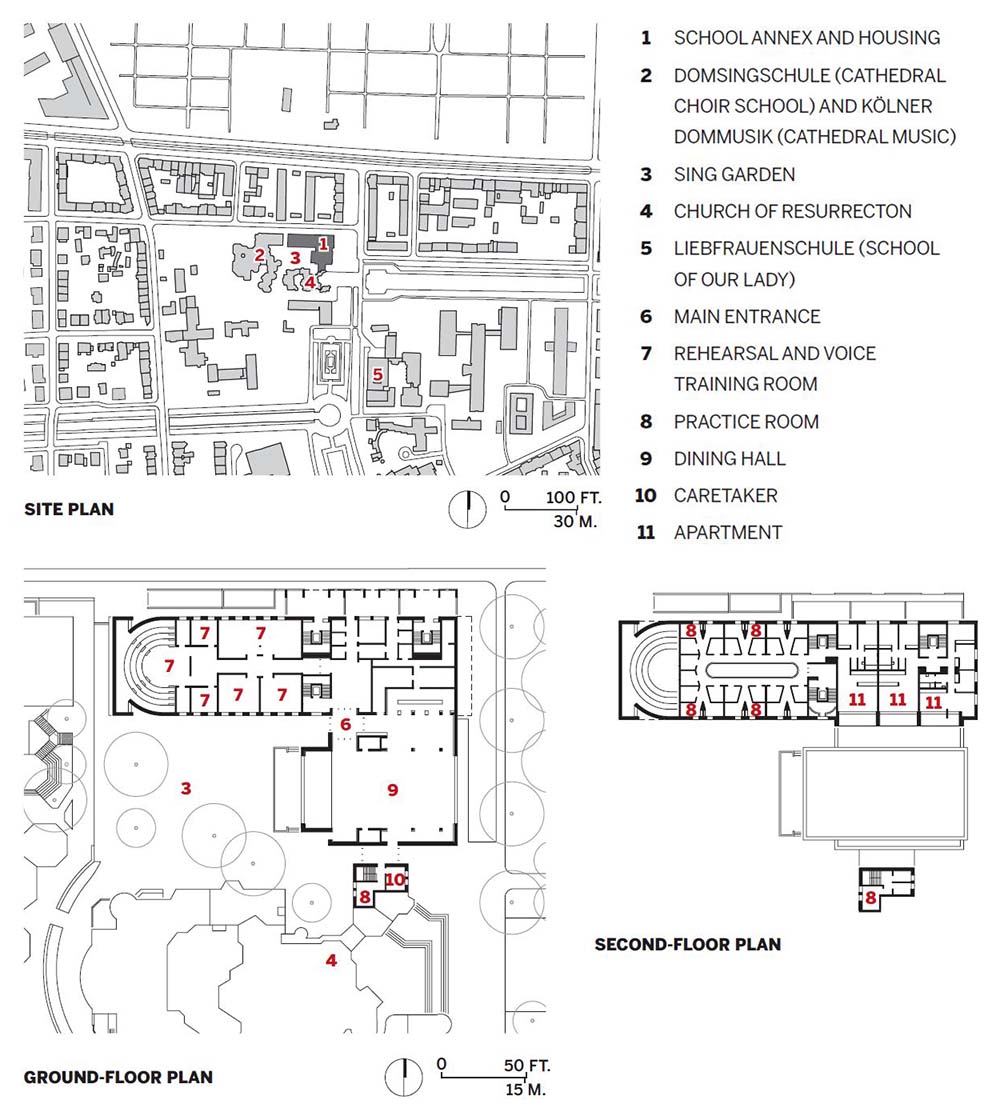
Credits
Architect:
LRO Lederer Ragnarsdóttir Oei Architects — Arno Lederer, Jörunn Ragnarsdóttir, principals; Marc Oei, principal and project manager; Frank Bohnet, deputy project manager; Philipp Gantenbrink, construction manager
Engineers:
Leonhardt, Andrä, and Partner (structural); Ingenieurburo Heiming (m/e/p)
Client:
Archdiocese of Cologne and Generalvikariat Abteilung Bau
Size:
57,000 square feet
Cost:
Withheld
Completion Date:
March 2020
Sources
Masonry:
CoenenJosef Ziegel- & Klinkerwerk
Elevator:
Schindler
Skylights:
Velux
Carpet:
Interface
Acoustical Ceilings:
Knauf
Wood-Frame Windows:
Siegenia
Elastomeric Roof Coating:
Bauder
Photovoltaic System:
Trox
Plumbing:
Geberit
Paints and Stains:
Sto
Lighting:
Betalumen; Bega
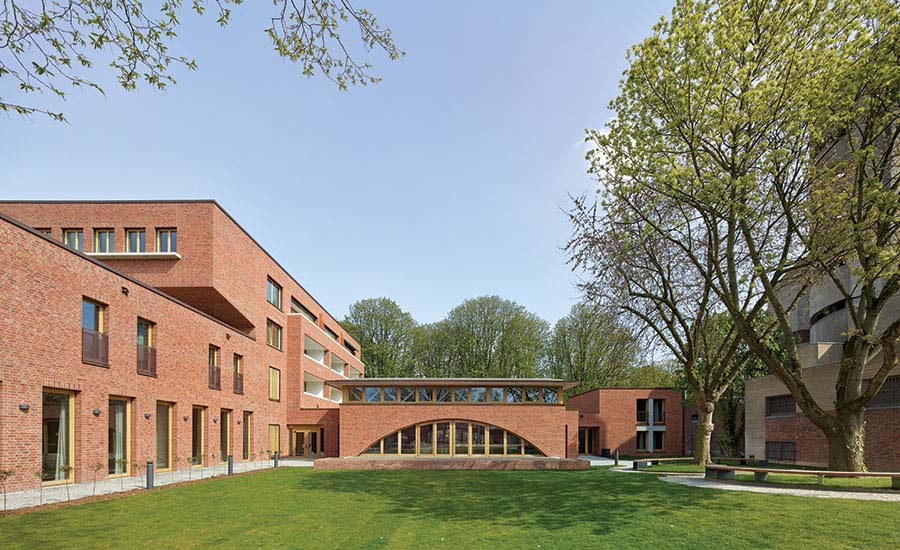


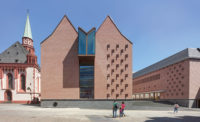


Post a comment to this article
Report Abusive Comment